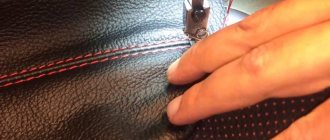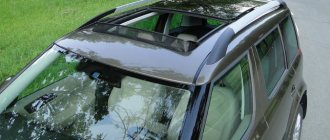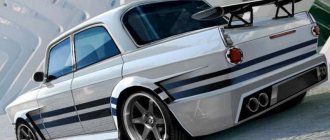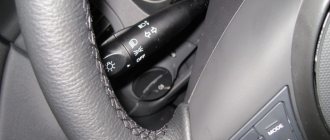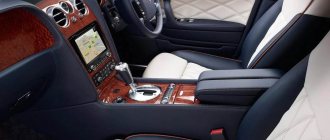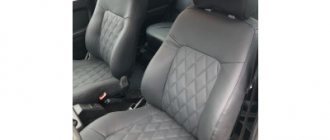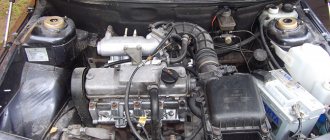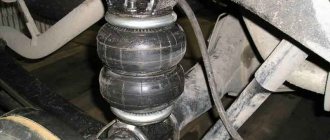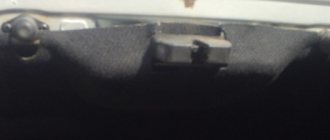Hi all! I think many of you are interested in upholstering the car interior with leather. This is a serious decision aimed at radically changing the appearance of the vehicle interior.
But covering with genuine leather gives not only an aesthetic result, but also allows you to get a number of other advantages, including the practical side of the issue. That’s why today we’ll talk to you about how you can do upholstery, where you should go and approximately how much such interior modifications will cost.
I’ll say right away that you shouldn’t try to do everything yourself, relying on photo and video instructions, if you are not an expert in the field of upholstery of car interiors. In all other cases, I strongly recommend finding professionals and entrusting them with the task.
Advantages and disadvantages
You should start with the main thing. Namely, by listing the benefits that you will receive if you cover the interior of your vehicle with leather.
The following objective advantages can be identified:
see also
Ant trunk: design options, owner reviews
- Improved appearance of the car interior. An indisputable plus, for the sake of which many decide to take such a step;
- The salon becomes more expensive and sophisticated. Feels like you are sitting in an elite premium car;
- Pleasant sensations. Leather is much better than fabric in terms of tactile sensations;
- A great way to perform seat repairs. If the chairs are worn out, upholstery will be an excellent solution to several problems at the same time;
- Strength and resistance to mechanical stress;
- If the material fades, it does so very slowly;
- Does not absorb foreign odors, unlike fabric;
- Leather is easy to wash and clean.
The list is quite impressive. If you have doubts or a different opinion regarding the listed benefits, we welcome your comments.
Yes, it cannot be said that leather is the ideal solution. And such a tight fit has a downside, which manifests itself in the form of some shortcomings.
In general, there are not many disadvantages, but you should also pay attention to them.
- Fast heating. If you leave the car in the sun without closing the window curtains, the skin will quickly heat up, and sitting on the seats will not be very pleasant;
- Need air conditioning. If the car is not equipped with air conditioning, in the summer the leather will show its shortcomings precisely due to heating. Therefore, it is better to install a cabin cooling system;
- Price. You will not only have to buy leather, but also pay the car shop for services. The total cost is decent;
- Impossible to do it yourself. No, in theory, you can reupholster the entire interior yourself. But the task can only be accomplished by people with the appropriate experience and knowledge. Therefore, in 99% of cases you will have to go to specialists.
As you can see, there are strengths and weaknesses. Whether the shortcomings will stop you, or whether the listed advantages will only help you finally decide to reupholster, is a purely individual question.
Selection of cladding material
Natural and artificial automobile leather are best suited for reupholstering car interiors. Both materials are characterized by high performance qualities, which sets them apart from the less popular carpet or velor. At the same time, leather covering is much easier to do with your own hands than, for example, flocking the interior. The reason for this is the high elasticity of the material, as well as the usual set of necessary tools. Recently, motorists are increasingly choosing Alcantara. However, the price for the original material is almost higher than the cost of genuine leather, while its cheaper substitutes cannot boast of high quality.
For these reasons, we will dwell in more detail on materials such as genuine leather and eco-leather.
Genuine Leather
Genuine automobile leather will become a real decoration of the interior. Is it possible to imagine a luxury car covered with a hard carpet or covered with multi-colored vinyl film?
However, a beautiful appearance is not the only advantage of genuine leather. It can withstand both frost and heat. Cracks will not appear on it due to temperature changes. Another positive property is resistance to ultraviolet radiation. Many materials fade in the sun, so after just a few years of use, the control panel and front seats, which are located directly under the windshield, become noticeably paler compared to the rest of the trim. But this will not affect natural leather. You can be sure that the interior will retain its color.
The interior of the car, covered in leather, looks expensive and solid.
Do not forget about the fire resistance of the material. Accidentally dropped cigarette ash will not harm the interior. Moreover, genuine leather does not absorb foreign odors, which is very important for those who like to smoke inside the car. The skin is also not afraid of other mechanical damage: it will take a lot of effort to scratch or tear such a coating.
On sale you can find material of various textures, including crocodile or ostrich leather. However, when choosing between smooth and perforated leather, it is better to give preference to the latter type. It is softer and more pleasant to the touch. In addition, its wear resistance is noticeably higher.
Perforated leather is softer and more pleasant to the touch
The only thing that can discourage you from upholstering the interior with genuine leather is its price. Its use becomes especially risky when you tighten it yourself. After all, if at some point something goes wrong, a large amount will be thrown away. If you are not ready to take such a risk, turn your attention to eco-leather.
Eco leather
Currently, artificial leather has practically received a second life. Outdated technologies have been replaced by newer ones. Low-quality leatherette is no longer used for upholstery of car interiors, giving way to eco-leather.
Eco leather is a synthetic material. During its manufacture, a thin layer of polyurethane is applied to a woven cotton or polyester base. At the same time, the characteristics of the material directly depend on the thickness of the layer: the thicker it is, the stronger the eco-leather is, but at the same time tougher. For car upholstery, the optimal thickness of polyurethane was experimentally determined.
The material received the name “eco leather” for two reasons. Firstly, during operation it does not emit toxic substances that adversely affect vehicle passengers. And secondly, after its invention, the number of animals killed for their skin decreased sharply, which pleased animal rights activists.
In terms of its external qualities, eco-leather is very close to its natural ancestor. Using special technologies, embossing is applied to the material, making it quite difficult to distinguish it from genuine leather. Moreover, the higher the price of the material, the more identical their appearance.
The appearance of eco-leather is very close to the appearance of natural material
Eco leather has a rich palette. You can use classic black or extreme red in the interior, or you can combine colors to your liking. But coloring natural material will cost you a pretty penny.
In terms of other characteristics, artificial leather is also not inferior to natural leather: wear resistance, moisture resistance and fire resistance are its strong qualities. Both of these materials remain clean for a long time, and if necessary, stains and dust can be easily removed with a wet sponge and soft cloth. It's no secret that many people are allergic to animal fur and skin, as well as the chemicals used in tanning. Eco-leather is perfect for them, as it is absolutely hypoallergenic.
At the same time, the cost of eco-leather is several times lower than natural leather, which makes it more accessible to the general public. You can safely take one or two meters in reserve if you are doing self-upholstery for the first time. The remaining material can be used to make a cover for the steering wheel, gear shift lever and other small elements of the car.
Regardless of whether you choose natural or eco-leather, purchase the material from specialized automotive stores. There are many reasons why leather used for making furniture, clothing and shoes is not suitable for upholstery. For example, its instability to temperature changes and reduced wear resistance.
Both natural and artificial materials have drawbacks that may seem insignificant to some. In cold weather, the coating quickly cools down, and in the sun it gets very hot. Accordingly, this slightly reduces the level of comfort. Whether it is worth paying attention to this feature of materials is up to you to decide. In any case, leather is one of the best solutions for interior decoration of a car.
Re-upholstery process
You can find out what the whole process looks like and what stages it consists of. Not everyone needs to know this, but it’s still better to understand what exactly the specialists to whom you give your car will do.
Work in the studio is divided into 3 main stages.
see also
Reupholstering a car interior with leather: how much does it cost, where can it be done?
- First stage. First you need to get rid of the old material. At the same time, they eliminate various defects and damage to plastic parts, headrests, armrests, restore bolsters in chairs, change the filling if necessary;
- Second phase. This is the reupholstery itself, for which the material and design of the future salon chosen together with the client are used;
- Third stage. The procedure is completed by installing all dismantled elements in the reverse order. Specialists also carry out control treatment of the leather with protective compounds, polish and hand over the car to the client.
The process may include a number of additional activities. This determines the final price for the services provided.
What is being pulled in the cabin?
Motorists are faced with a choice between total reupholstery and spot modernization of the interior. You need to understand how much leather is needed to reupholster the entire interior of a car, and what the prices are for such services.
Some people spare no expense and order a comprehensive service. Others act in stages, starting from one part, and gradually dragging the remaining elements of the interior of their car.
The following components are most often subject to reupholstery:
- Armchairs. They are completely remade if the seats were previously fabric or made of another material. Leather ones are sometimes restored through partial repairs. It all depends on the condition and extent of damage;
- Steering wheel. Many car owners even reupholstered the steering wheel themselves using leather. The task is not easy, but doable. The steering wheel in leather looks great, holds better in your hands, and does not slip;
- Ceiling. Usually they are reupholstered in situations where there is a global change in the interior;
- Torpedo. There are basically two options here. Either the owner changes the design of the car, or the car was in an accident and now needs restoration;
- Small parts. These include the parking brake handle, door inserts, gear knobs, visors, etc. Little things, but they can highlight the design of the car.
The choice is yours. Objectively assess your financial capabilities and real needs. Not everyone needs to enclose everything in skin in a circle. But sometimes a few re-flashed elements can radically change the appearance of a car’s interior, without the need to invest huge amounts of money in modernization.
car interior reupholstery
Many people get annoyed when they get into their used car every day, their gaze stops at the greasy armrests, door panels, stained ceiling, etc. and at the same time they want to change everything, but there is no way to change their beloved car, and there is no way to pay for reupholstery of the interior either. There is a way out to try to pull it yourself. Tool: . Knife
Awl
Stitching awl 0.3mm thin
BF glue or shoe glue that remains elastic when dried.
Paper tape. Glue brush. Degreaser. acetone, solvent 647. Screwdrivers. Scissors. Shoe's hammer or rubber mallet.
We buy leather or substitute leather (for the steering wheel only a natural product) based on the area of the parts. We dismantle all the necessary elements of the interior (door trims, remove the steering wheel completely).
yes, airbags are removed with the battery disconnected
Using tape we make a pattern for the steering wheel. Cover the steering wheel with several layers of tape. Using a utility knife, carefully cut it along the inside of the steering wheel rim at the location of the future seam. Divide the pattern into two or three parts.
This is at your discretion, I will say that the fewer seams the better it looks, but the process is more labor-intensive. We mark the skin according to the pattern.
We make a reserve on the parts that go into the inner part of the steering wheel. The rim itself is without stock. Let’s also pay attention to the elasticity of the skin. We try to pull the skin in our hands; if it is very soft, it will stretch strongly enough. This is why you need to take this into account when sewing parts together. Having outlined the parts together, we try them on the rim. The leather should be stretched tightly over the rim, not loose, but also not tearing the seams. If the size is correct, prepare the edges of the leather for stitching. glue it lightly. We turn it 3mm. And tap it with a hammer until the glue dries. The edge that will go on the steering wheel rim is ready.
Mark the holes for the seams with a pen. We pierce it with an awl. We sew the transverse seams from the wrong side using an awl with a hook. Using a machine seam, we also glue, tuck, tap so that the seam becomes thinner.. Using a machine stitch.. it will turn out like this. If you have sewn everything together, the belt turns out to be a ring, pull it onto the rim of the steering wheel. Let's pay attention to the inner petals of the steering wheel. All parts should fit into place. And where the skin goes under the airbag panel, there should be a reserve of skin left. The bends under the petals can slide off when sewing, or there will be excess when pulling, in case of excess, we cut it in place, glue the hem and carefully press the edge with pliers, prick holes with an awl and continue stitching. If the skin doesn’t come together, we try to wet the area with warm water, but don’t wet the seam, it will tear. It is better to start the firmware from these places. We take thread with a reserve for each element. We sew 5-10 stitches with lacing, pull it through the holes, then smoothly pull it with a hook, each stitch.
It turns out to be a seam like this. Or like this. When everything is sewn. We cover the margin on the petals with an airbag panel, see how it covers our trimmed steering wheel, trim the excess leather so that the cuts are not visible
glue the edges from the inside. The steering wheel is ready. Let's move on to the airbag panel. It’s easier here, we rough it with sandpaper, degrease it, apply glue, glue the leather, cut off the excess around the perimeter of the panel with a margin of 5-7mm. We glue the stock and tuck it under the inner edge of the panel.
The process is the same with the door panel.
let's move on to the steering column console
the meaning is approximately the same, glue, pull, trim, pull, glue. Where it doesn't stick, you can sew along the edge. Through the plastic. I first pierced it with an awl. Let's move on to the armrests, this is where it gets more complicated. The armrest has a metal base filled with thick foam rubber; we peel off all the foam so that the base remains. What remains is a metal part that faintly resembles our armrest. You will need 6-8mm plywood, cut out the part according to the shape of your future armrest. You can improvise with the form. Cut blanks
We fasten it to a metal base with self-tapping screws. We process the edges, grind them, round them. For upholstery we use a soft but dense material, I don’t remember what it’s called, it’s sold for construction. Markets, thermal insulation 1 m. 10 mm. The thickness costs 500 rubles. White in color, reminiscent of porous rubber. We cut out the sides and glue them onto the plywood armrest. We cut a strip on the top part and glue it too. After the glue has dried, in order to round it, the corners can be easily sanded with coarse sandpaper. Next we cover it with leather. The seam should go along the bottom side, invisible from above. The door handles are re-tightened just like the steering wheel. cost of material 4 sheets of crocodile leather, 05-06 m/sq. about 2000 rub. output steering console. 2 doors. and armrests. brown leather for steering wheel and handles 2 sheets 1000 RUR. thread 200r. glue 2 cans of 0.8 l each, 1 can for the ceiling. price 80 rubles per jar. upholstery on the ceiling 3m/145cm for 250 rubles. for m/p. two days in time.
